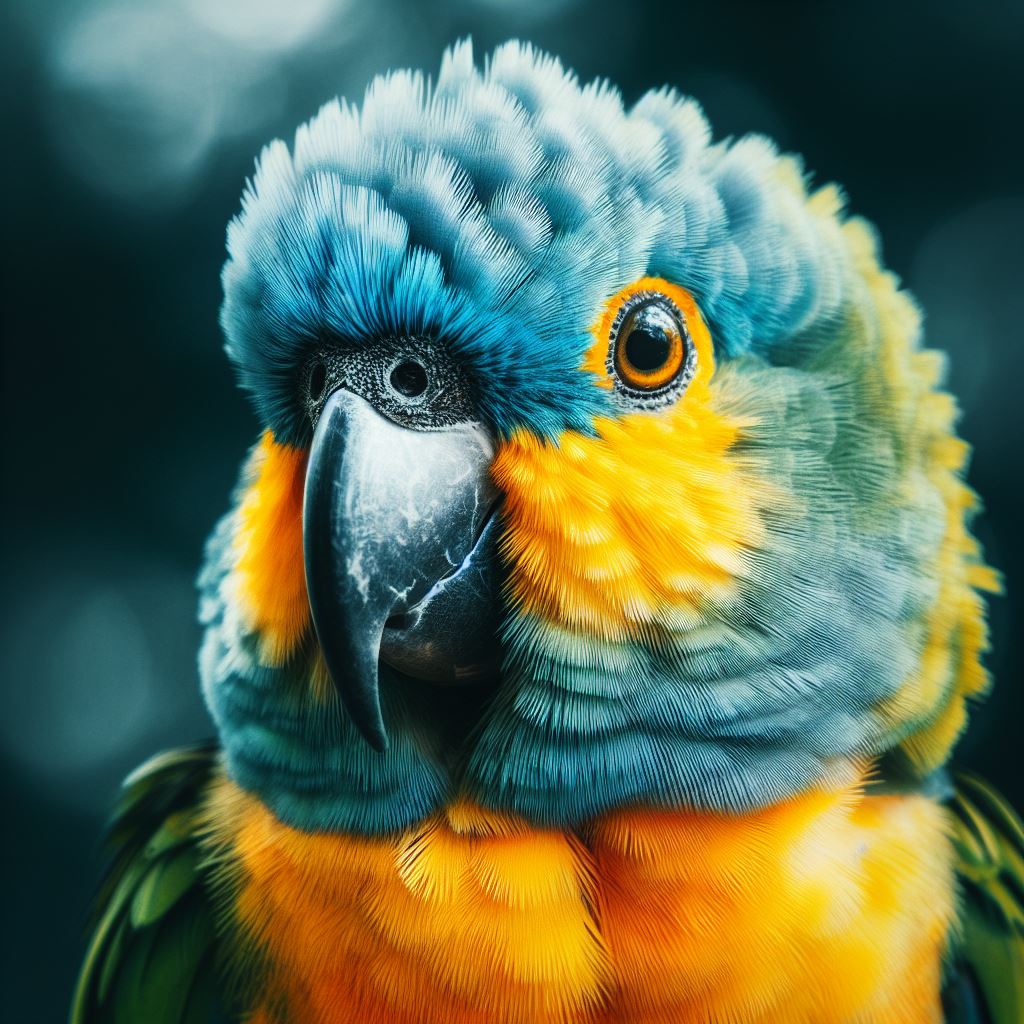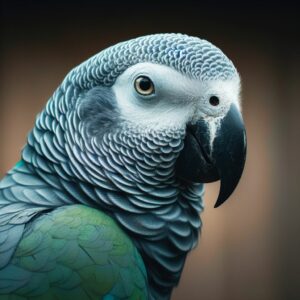Welcome to the mesmerizing world of the Lilac Crowned Amazon Parrots, where nature’s marvels come to life. In this blog post, we embark on an exciting journey to unveil the enigmatic world of Lilac Crowned Amazons. We will delve into their origins, social intricacies, communication methods, and the essential role they play in our ecosystem.
In the heart of Central American rainforests, the lilac-crowned Amazon Parrots carve out their existence. Their versatile adaptability is evident as they navigate not only the towering canopy layers. These parrots find sanctuary amidst the diverse landscapes, extending their territories into wooded areas, savannas, and even the agricultural fringes adjacent to the forests. This remarkable adaptability showcases their ability to thrive in environments ranging from lush jungles to more open spaces, emphasizing their pivotal role in maintaining the ecological balance of these regions.
In their chosen habitats, lilac-crowned Amazon Parrots serve as essential custodians of Central American rainforests. Beyond being mere inhabitants, they emerge as integral contributors to the intricate web of life, facilitating seed dispersal that aids in the regeneration of plant species. Their presence echoes through the ecosystem, shaping the biodiversity that renders Central American rainforests awe-inspiring. Through their varied diet of fruits, nuts, seeds, and vegetation sourced from their diverse habitats, they not only sustain themselves but also nurture the very landscape they call home. United in flocks, they foster social bonds, enhancing their resilience against the wild’s challenges.
Physical Characteristics
The Lilac Crowned Amazon Parrots boast striking physical characteristics that make them stand out in the avian world. Their vibrant plumage, adorned with shades of green, yellow, and blue, creates a captivating visual spectacle against the backdrop of their natural habitats. One of their most distinctive features is the regal lilac crown that adorns their heads, giving them their name. This elegant marking serves as a hallmark, differentiating them from other Amazon parrot species.
In addition to their vibrant colors, these parrots have a medium-sized, robust build. Their wings, when spread, reveal a brilliant flash of colors, captivating onlookers. The Lilac Crowned Amazon Parrots also possess sharp beaks and strong claws, essential tools for foraging and navigating their environment. Their physical traits not only contribute to their stunning appearance but also reflect their adaptation to their diverse habitats, allowing them to thrive in the challenging ecosystems of Central America.
Social Structure
The Lilac-Crowned Amazon Parrots exhibit a complex social structure that reflects their intelligence and adaptability. Within their native habitats, they form tight-knit flocks, often consisting of family members and other bonded individuals. These social bonds are crucial for their survival, providing safety in numbers and enhancing their ability to forage for food.
Social interactions within these flocks are intricate and multifaceted. They communicate through various vocalizations and body language, reinforcing their social cohesion. These interactions go beyond mere survival; they serve as a means of emotional support, companionship, and even learning. Younger parrots often observe and imitate the behaviors of older, more experienced individuals, showcasing a form of social learning.
Within these flocks, roles are defined, and cooperation is key. Whether it’s foraging for food, protecting against predators, or raising offspring, the social structure of Lilac Crowned Amazon Parrots highlights their cooperative nature. These intricate social dynamics not only contribute to their survival in the wild but also make them fascinating subjects of study, revealing the depths of their intelligence and the richness of their social lives.
Communication and Vocalization
Lilac Crowned Amazon Parrots are masters of communication, employing a diverse range of vocalizations and expressive body language to convey their thoughts and emotions. Their vocal repertoire is truly impressive, spanning from sweet melodic tones to sharp, attention-grabbing calls. What sets them apart is their exceptional ability to mimic sounds from their surroundings, including human speech. This mimicry not only reflects their intelligence but also enhances their interactions with both their fellow parrots and the human observers lucky enough to witness their abilities. Their communication isn’t limited to sound; subtle yet meaningful gestures, such as head tilts, feather displays, and wing movements, are integral components of their non-verbal language. These intricate cues allow them to express emotions, establish social hierarchies, and strengthen bonds within their flocks, showcasing their social intelligence.
Feeding Habits
Lilac Crowned Amazon Parrots are meticulous foragers with a diverse and balanced diet in their natural habitats. Their menu primarily consists of fruits, nuts, seeds, and various vegetation found in the lush Central American rainforests. Their keen sense of sight and agility enables them to locate and extract nourishment from different parts of plants, demonstrating their resourcefulness in the wild.
One of their vital ecological roles lies in seed dispersal. As they feed on fruits and seeds, they inadvertently scatter seeds across various locations. This unintentional act significantly contributes to the regeneration of plant species, fostering biodiversity and maintaining the forest’s ecological balance. In this symbiotic relationship, the parrots receive sustenance, while the forest benefits from their foraging habits, ensuring the continuous cycle of growth and renewal in their habitat. This essential role underscores the significance of lilac-crowned Amazon Parrots in the Central American rainforests, highlighting their impact not just on their survival but also on the overall health and diversity of their ecosystem.
Reproduction and Nesting
During the mating season, Lilac Crowned Amazon Parrots engage in intricate courtship rituals, showcasing their social and emotional intelligence. These rituals involve vocal displays, mutual preening, and affectionate gestures, all aimed at strengthening the bond between potential mates. Once a pair forms a strong connection, they proceed to find a suitable nesting site, often in tree hollows or crevices in the dense forests of Central America.
Nesting is a collaborative effort between the male and female parrots. The female lays eggs, usually numbering around two to four, and both parents take turns incubating them. This shared responsibility highlights their cooperative nature, emphasizing the importance of mutual care in raising their offspring. Once the eggs hatch, the parents diligently provide warmth, protection, and nourishment to their chicks. This nurturing environment fosters the growth of the young parrots, preparing them for the challenges of the wild. Witnessing these intimate family dynamics reveals the depth of their social bonds and showcases the intricate care they invest in the next generation, ensuring the continued existence of their species in the vibrant tapestry of Central American rainforests.
Intelligence and Problem-Solving Skills
Lilac Crowned Amazon Parrots are distinguished by their exceptional intelligence and problem-solving abilities, making them one of the most intriguing species in the avian realm. Their keen intellect is demonstrated through their capacity to learn and imitate a wide array of sounds, a skill that has endeared them to humans for centuries. This mimicry showcases not only their cognitive acumen but also their remarkable adaptability to new environments. In captive settings, they have astounded researchers and enthusiasts alike with their ability to solve intricate puzzles and navigate complex tasks. Their observational skills are finely tuned, allowing them to comprehend and mimic not just the sounds of their surroundings but also the behaviors of other species, including humans. This level of cognitive flexibility suggests a deep understanding of their environment and a capacity for social learning, elevating them to the upper echelons of avian intelligence.
Conservation Status & Efforts
The Lilac Crowned Amazon Parrots, once thriving in the lush landscapes of Central America, now find their existence hanging in the balance. Their conservation status is a stark reminder of the pressing challenges faced by countless species in the wake of habitat destruction and illegal activities. Deforestation, driven by human expansion and agricultural needs, has dramatically reduced their natural habitats. This loss is further exacerbated by the illegal pet trade, where these magnificent birds are captured and traded, disrupting their populations and eroding their numbers in the wild. As a result, the lilac-crowned Amazon Parrots are classified as vulnerable, underscoring the urgent need for comprehensive conservation efforts.
Conservation initiatives are crucial lifelines for these parrots. They encompass a multi-faceted approach, including habitat preservation, strict enforcement of anti-poaching laws, and community engagement. Creating protected areas and raising awareness about the vital role these parrots play in maintaining the ecological balance of Central American rainforests are integral parts of these efforts. International cooperation is equally essential; collaboration between nations and organizations bolsters the fight against the illegal pet trade, providing these parrots with a chance at survival. The conservation status of the Lilac Crowned Amazon Parrots serves as a rallying cry, urging the world to join hands in safeguarding not just their future but also the biodiversity of our planet.
Interactions with Humans
Interactions between Lilac Crowned Amazon Parrots and humans have a multifaceted history, spanning both cultural significance and ethical challenges. In indigenous traditions, these vibrant birds often hold symbolic importance, representing various concepts such as wisdom, freedom, or even spirituality. However, the popularity of these parrots as pets has led to a significant ethical dilemma. While they captivate with their intelligence and charm, their capture for the pet trade raises serious concerns about their well-being and the preservation of their species in the wild.
Ethical pet ownership is paramount in interactions with these parrots. Responsible pet ownership includes providing spacious and enriching habitats, a balanced diet, and social interaction, mirroring their natural social behaviors. Education plays a crucial role; raising awareness about their conservation status, their role in ecosystems, and the ethical considerations of keeping them as pets is essential. Encouraging people to appreciate these birds in their natural habitats, through ecotourism and wildlife conservation initiatives, promotes a more respectful interaction, ensuring the Lilac Crowned Amazon Parrots can continue to enchant future generations while thriving in their natural environments.
Captive Care and Considerations
Caring for lilac-crowned Amazon Parrots in captivity demands a deep understanding of their complex needs. Proper birdcage setup is essential, ensuring they have ample space to fly, play, and explore. The cage should include various perches and toys to keep them mentally stimulated and physically active. Nutrition is key; a balanced diet consisting of fresh fruits, vegetables, high-quality pellets, and occasional nuts mirrors their natural intake in the wild.
Matting the cage with soft, natural materials provides a comfortable environment. Regular health care check-ups are imperative, including beak and nail trimming when necessary. Mental stimulation is vital; interactive toys, puzzles, and social interaction help prevent boredom and behavioral issues. These parrots thrive on routine, so consistent feeding schedules and sleep patterns are crucial.
Training them through positive reinforcement techniques fosters trust and mental engagement. Responsible pet ownership extends to understanding their long lifespan; these parrots can live for several decades, requiring a lifelong commitment. Additionally, potential owners must be aware of legal regulations, particularly in the United States. Permits are often necessary to keep these exotic birds. Captive care thus involves a delicate balance between meeting their physical and mental needs while respecting their wild instincts, ensuring a fulfilling and ethical life for these magnificent creatures.
Interesting Facts and Trivia
Delight in a collection of fascinating facts and trivia about Lilac Crowned Amazons, unveiling lesser-known aspects of their behavior, ecology, and interactions within their natural habitats.
- Lifelong Bonds: Lilac Crowned Amazon Parrots are known for forming lifelong monogamous bonds with their mates. These strong pairings emphasize their commitment to their partners, reflecting the depth of their social relationships.
- Diverse Vocal Talents: These parrots are exceptional mimics. In addition to imitating various sounds, they can even mimic human voices with remarkable accuracy, often surprising and delighting those who encounter them.
- Nurturing Parents: Both male and female lilac-crowned Amazon Parrots actively participate in parenting. They share responsibilities such as incubating eggs, feeding the chicks, and protecting the nest, showcasing their cooperative nature in raising their offspring.
- Impressive Longevity: When well cared for, these parrots have an impressive lifespan. They can live for several decades, with some individuals reaching up to 80 years in captivity, making them lifelong companions for those who choose to keep them as pets.
- Social Learners: Lilac Crowned Amazon Parrots display advanced social learning skills. They observe and learn from the behaviors of other parrots, a trait that plays a crucial role in their survival and adaptation in the wild.
- Unique Coloration: While predominantly green, their vibrant plumage is accentuated by splashes of yellow, blue, and lilac on their heads. This distinct coloration, particularly the lilac crown that gives them their name, makes them easily recognizable and visually captivating.
- Ecological Engineers: By creating and maintaining nests in tree hollows, they contribute to the ecosystem of other species. Their nesting sites become homes for various creatures, highlighting their role as ecological engineers within their habitats.
Conclusion
In this captivating journey, we have explored their physical attributes to social bonds, communication skills, and the challenges they face in the wild and captivity. As we recapitulate this adventure, let us echo the urgent need for their preservation. These remarkable creatures, with their vibrant colors and intelligent minds, deserve our collective efforts to ensure their legacy persists.






